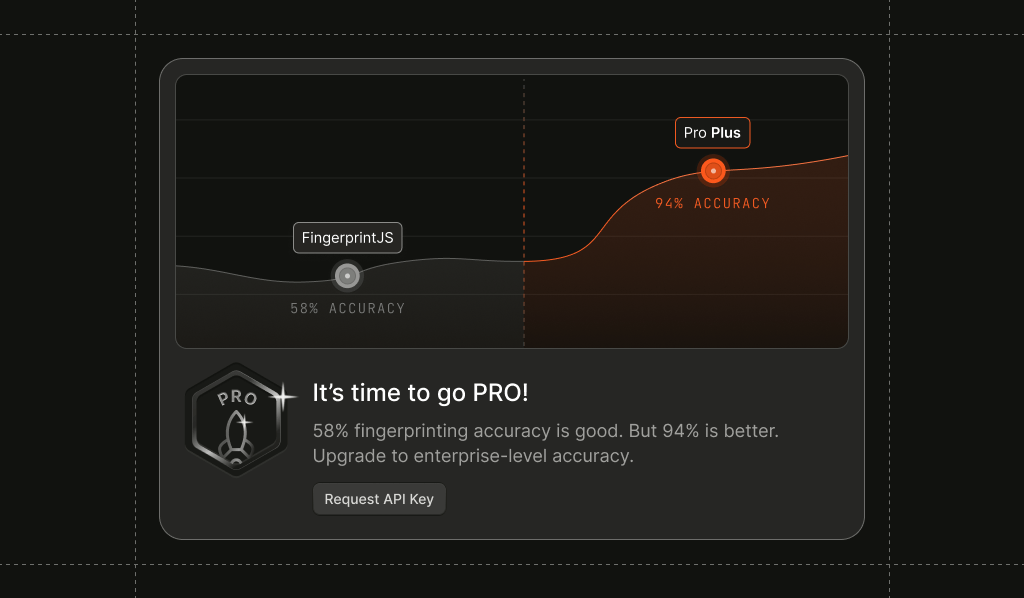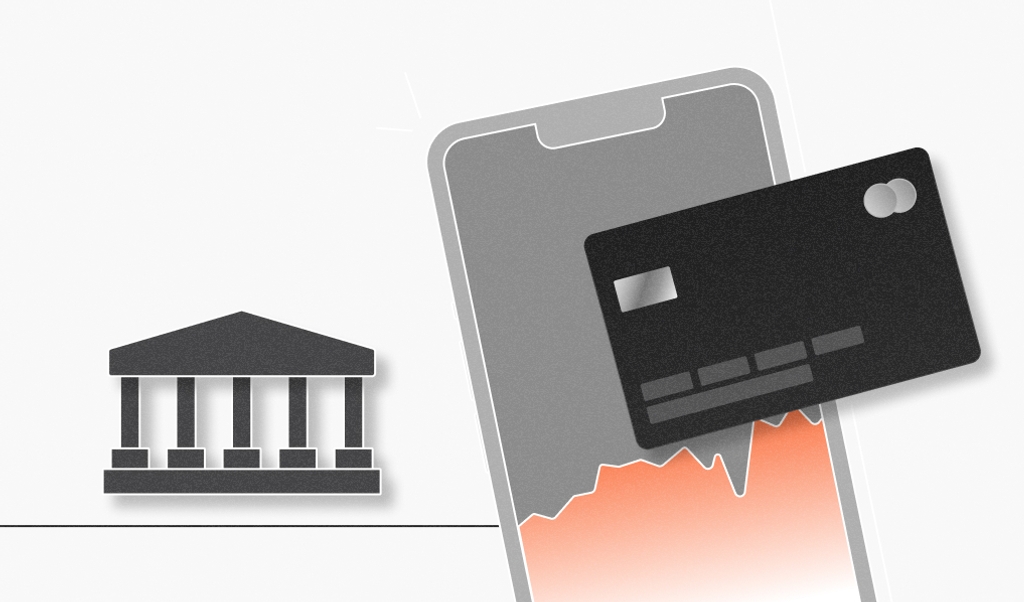
Summarize this article with
Organizations looking for a browser or device fingerprinting solution to add to their fraud prevention stack often first turn to open-source solutions.
With these open-source tools, teams can quickly begin identifying devices and linking suspicious behaviors across sessions. This is especially helpful for organizations in growth mode, where speed and flexibility matter. The initial results are often enough to demonstrate the value of fingerprinting and help teams make the case for further investment.
However, as AI-driven fraud continues to increase and teams need to act quickly to combat different types of fraud, the limitations and risks of using open-source solutions become harder to ignore.
The accuracy gap: The risks of mediocre identification
Many open-source tools offer a basic level of browser identification, but their low to middling accuracy translates into significant blind spots. This level of confidence may be acceptable for simple use cases or as a proof-of-concept (POC), but it quickly shows its limits at scale: When a fingerprint changes due to a browser update or subtle hardware difference, or when privacy mode is used or cookies deleted, the connection between fraudulent actions and a visitor can be lost.
For teams tasked with preventing fraud, this means that nearly half of returning devices may go unrecognized. Fraudsters can exploit these gaps by manipulating their environments, making it difficult to reliably link suspicious activity. As fraud patterns become more complex and fraudsters increasingly use AI tools to bypass traditional fraud defenses, teams are realizing that average accuracy just isn’t enough.
When visitor identification is only moderately accurate, businesses face heightened risks on several fronts.
- Payment fraud becomes harder to detect because fraudsters can evade detection simply by tweaking their device or resetting their browser.
- Account takeover (ATO) attempts go unnoticed because the system is unable to consistently recognize returning devices when the same fraudster makes repeated attempts.
- New account fraud is also harder to detect because it’s easy for fraudsters to create multiple accounts and abuse promotional offers.
The result? More chargebacks, increased operational costs tied to manual triage and investigation, and a greater risk of negative impact to reputation.
Upgrade to increased stability & persistent identification with enterprise-level intelligence
We’ve found organizations that switched to Fingerprint Pro saw their identification accuracy jump to an average of 94% during POCs. This enterprise-level accuracy is the result of a fundamentally different approach.
Unlike open-source solutions, which often operate solely in the browser, Fingerprint Pro uses a hybrid architecture that brings together raw device signals and sophisticated server-side analysis. The platform collects more than 100 device, network, and behavioral signals, then processes them using machine learning and fuzzy matching algorithms. This enables Fingerprint Pro to generate a visitor ID that remains stable even as browsers and operating systems evolve.
The result is a unique identifier persists for months or even years, and doesn’t break when a user clears cookies, switches to private browsing mode, or updates their software. This stability is crucial for linking suspicious actions over time, identifying repeat fraud attempts, and maintaining a comprehensive view of visitor activity.
The advantages of Fingerprint Pro’s server-side processing & Smart Signals
Server-side processing is a game changer for device intelligence. While client-side solutions are limited to signals directly observable in the browser, server-side analysis allows Fingerprint Pro to unify data across sessions and apply advanced algorithms to detect sophisticated fraudsters. This holistic view makes it possible to spot subtle patterns, deduplicate identifiers that might otherwise appear unrelated, and maintain visitor IDs that persist for months or even years.
By operating beyond the constraints of the client, Fingerprint Pro can adapt to changes in browser technology, privacy settings, and hardware trends. This means that device identification remains robust even as the environment shifts — a critical advantage for organizations facing determined fraudsters who constantly seek new ways to slip through the cracks.
Fingerprint Pro also provides a suite of 20+ Smart Signals that give risk and fraud teams deeper context on every visitor. For example, for organizations struggling with preventing account takeover (ATO) attacks, the following Smart Signals, combined with visitor ID, can help surface attempts before they’re successful:
- Bot Detection identifies automated tools often used in credential stuffing or brute force attacks, both common in ATO attempts.
- VPN Detection flags if a user is hiding behind a VPN, which is commonly used by fraudsters to mask their location.
- Velocity Signals surfaces unusual spikes of activity, such as a high number of attempted logins in a short time frame, to reveal suspicious behavior patterns that could indicate an ATO attack.
With these real-time, actionable signals, teams can make informed decisions about which users to trust and provide a frictionless experience — and when to step up authentication or block access altogether.
Having this level of insight means you’re not just relying on a single identifier. Instead, you gain a multi-dimensional view of each device and browser, making it far more difficult for fraudsters to slip through. Our Smart Signals are designed to expose even subtle signs of risk, so you can act quickly and confidently, long before fraud has a chance to impact your business.
Privacy-forward & compliant
Fingerprint Pro is SOC 2 Type II certified and complies with both General Data Protection Regulation (GDPR) and the California Consumer Privacy Act (CCPA) rules. This built-in compliance means organizations can focus on business priorities without the added burden of managing security and privacy controls on their own.
By choosing a platform with robust security and governance features, teams gain peace of mind that sensitive data is handled responsibly. This is especially important for enterprises operating in regulated industries or those serving customers in multiple jurisdictions.
Key takeaways: Average is no longer good enough
Fraud tactics evolve quickly, and companies relying on basic browser fingerprinting risk falling behind. Upgrading to Fingerprint Pro means stronger fraud prevention and fewer false positives, while also enabling businesses to provide a better experience for their users.
Our team has helped organizations make this transition and see immediate results. If you’re ready to move beyond the limitations of open-source solutions, you can start a free trial of Fingerprint Pro or reach out to our sales team to discuss how we can help you build a more resilient fraud prevention strategy.
Ready to solve your biggest fraud challenges?
Install our JS agent on your website to uniquely identify the browsers that visit it.



